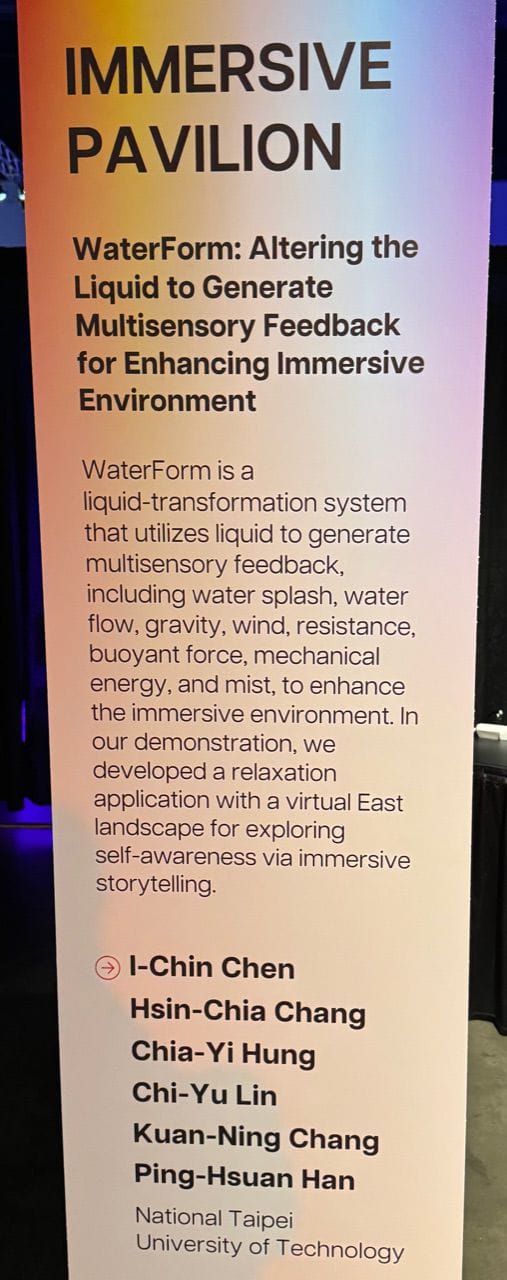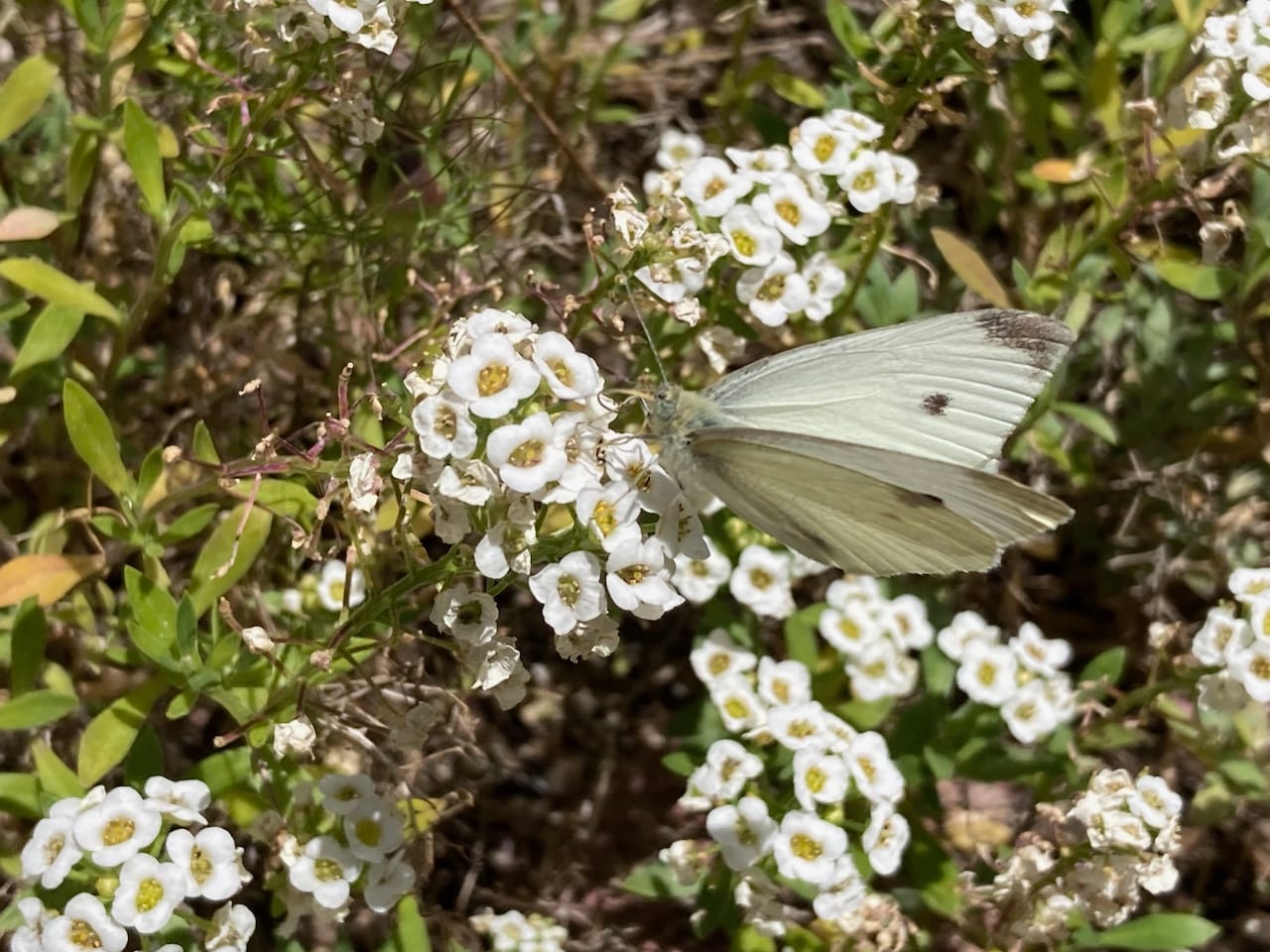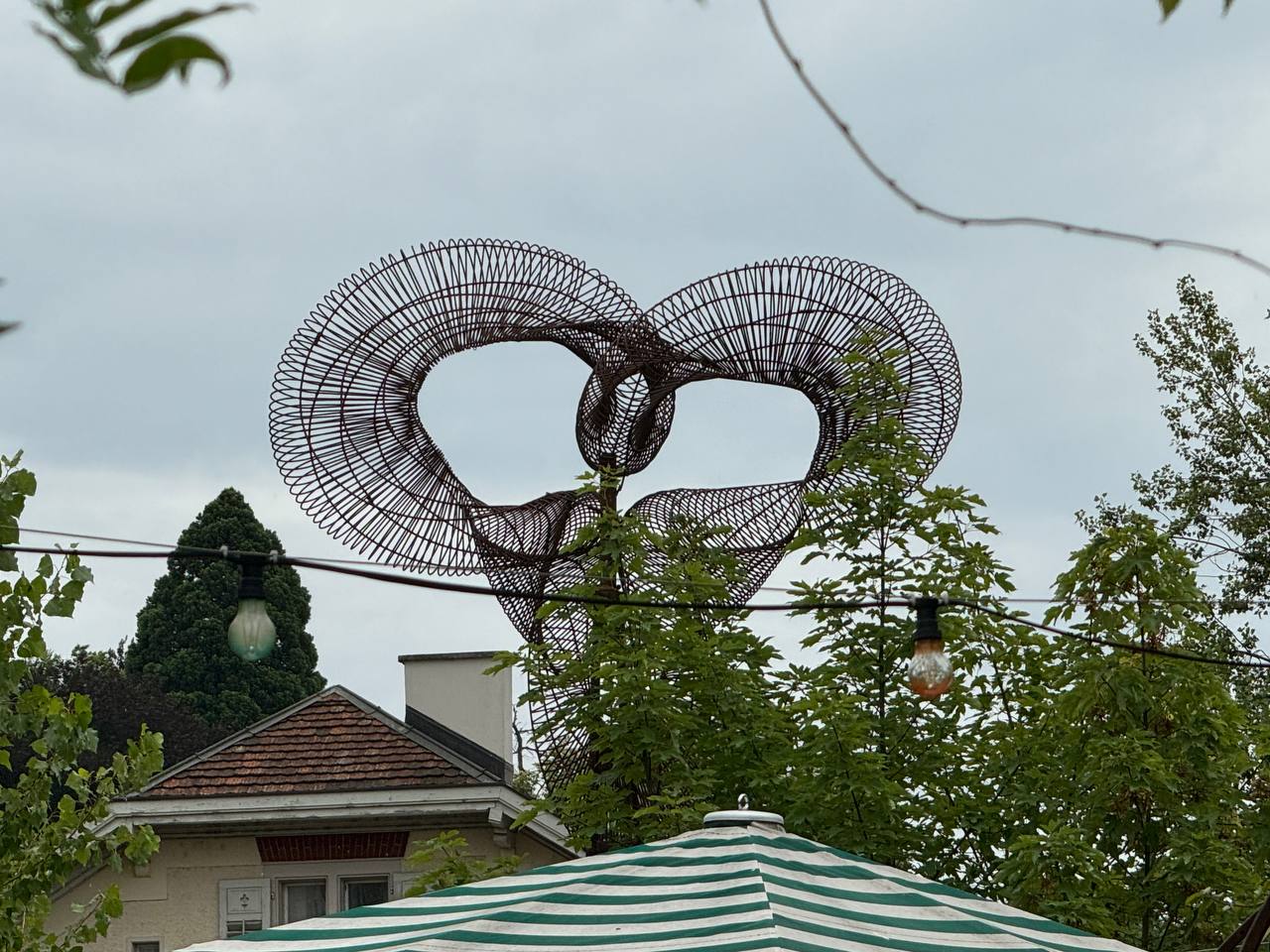Plex: 21 August 2024
Audrey Tang / Lovolution Radio; Interview with Liz Carlisle; Remembrance and Mourning; SIGGRAPH 2024; Stymied; Pix from the Garden; Visits to The Dreamtime

The Biweekly Plex Dispatch is an inter-community newspaper published by Collective Sense Commons on first and third Wednesdays of each month. Price per issue: 1 USD, or your choice of amount (even zero).
In This Issue
- Audrey Tang / Lovolution Radio (Charles Blass)
- Interview with Liz Carlisle (David Witzel)
- Remembrance and Mourning (Kevin Jones)
- SIGGRAPH 2024 (Julian Gómez)
- Stymied (Douglass Carmichael)
- Pix from the Garden (Ken Homer)
- Visits to The Dreamtime (Ken Homer)
charles blass
Audrey Tang / Lovolution Radio
h/t Charles Blass
Charles offers two treats for this issue – ed.
endlossounds: Lovolution
A rare daytime set at the summer radio festival from Radio LoRa in Zurich.
Radio LoRa overview: Lovolution
Playback: endlossounds: Lovolution
Audrey Tang in Zurich
“amazing session with the great audrey tang this month in ztown – all around remarkable discussion, moderation, questions/ audience – a veritable rosetta stone of blueprints”
OpenData.ch overview:
Audrey Tang: Plurality - The Future of Collaborative Technology and Democracy
YouTube:
charles blass
Interview with Liz Carlisle
by David Witzel
I wanted to let Plex readers know that Ken, Klaus and I hosted a session with Liz Carlisle on her new book, Healing Grounds - Climate, Justice, and the Deep Roots of Regenerative Farming.
In Healing Grounds, Carlisle shares stories of Indigenous, Black, Latinx, and Asian American farmers who are reviving their ancestors’ methods of growing food—techniques long suppressed by the industrial food system. These farmers are restoring native prairies, nurturing beneficial fungi, and enriching soil health. While feeding their communities and revitalizing cultural ties to land, they are steadily stitching ecosystems back together and repairing the natural carbon cycle. This, Carlisle shows, is the true regenerative agriculture – not merely a set of technical tricks for storing CO2 in the ground, but a holistic approach that values diversity in both plants and people.
The 1-½ hour hour session was co-hosted by David Witzel, Global Regeneration CoLab; Ken Homer, Collaborative Conversations; and Klaus Mager, Food With Thought.
charles blass
Remembrance and Mourning
by Kevin Jones
I am working with a two-spirit Cherokee on a memorial to the first massacre by the first European settlement in Buncombe County. It was launched from the land we now own. We bought the land from the Davidson family who had lived here 285 years.
I will do a remembrance of those people who looked like me, who massacred the Cherokee band. I have researched their story.
We will do it with Warren Wilson College, which is 25 yards away, as part of their Swannanoa River Revival. They are reintroducing a type of snail darter they have incubated that plays an essential role in cleaning the river; eating bad bugs and bad plants, so that's where the revival comes from. The revival will be at the college, the memorial on our land. There is a good, small, protected meadow for it.
We will also leave behind some kind of marker. We will put it on our land, which is the site of a village where people lived for 5,000 years. Across the river, at the college, that part of the village was excavated and bodies disturbed, by their now-retired archaeologist and students.
The Cherokee want access to the village site on our land that has not been defiled. We are working that out.
charles blass
SIGGRAPH 2024
by Julian Gómez
The SIGGRAPH 2024 conference was held in Denver, Colorado at the end of July. The Colorado Convention Center is huge, absolutely tremendous, which was good, because this year's conference had an unusual amount of content.
The academic part of SIGGRAPH is generally focused on technical publications, art publications, and ongoing research. The first two areas are presentations of reviewed papers. The immersive pavilion is research projects considered interesting by the review committee. It is entirely comprised of installations where the viewers are expected to physically engage in the research project.
I’m going to describe one in detail because it involved so many sensory inputs: “WaterForm: Altering the Liquid to Generate Multisensory Feedback for Enhancing Immersive Environment” from The National Taipei University of Technology.

Sit down on a stool and remove shoes. Insert feet into thin plastic Wellingtons. Place feet inside a wading pool. Don VR headset (note: any worthwhile VR headset includes stereo audio, with the audio sources typically spatially positioned). Staff place tools (not VR controllers) into each hand - right hand is a brush, left hand is a water ladle. Each is about 2 ½ feet long and equipped with gyros and vibrating motors that are under wireless host control.
The virtual experience is that you’re sitting in a boat gliding across a lake in the mountains, past a temple complex. You are supposed to use the tools to interact with the water, with the electronics providing haptic feedback to simulate the weight and resistance of water.

Senses activated: Visual and audio from the VR headset. Haptics from the tools. There was a fan to create an actual breeze. Haptic from having lower legs inserted into the real water in the wading pool, which had a pump to move the water. Actual water mist, during the time that virtual water mist was displayed.
Another major segment of the conference is the vendor expo. For many years a big component has been DCC (Digital Content Creation) tools. However, this year I noticed half a dozen booths featuring GAI products, showing that it already has a position in the commercial market, certainly to the point where the vendors could afford a booth at the SIGGRAPH expo. Even the Getty is getting in on the action.
The other major part of SIGGRAPH is art. Art papers are reviewed, but the art gallery is curated. Similar to the pavilion, most of the art pieces were interactive. I’d like to mention “Spambots” as a terrific example of merging art and technology to comment on the human experience.

This piece was a bunch of Spam cans emptied out and filled with electronics and actuators. Each can had a small keyboard in front, and its two actuators tapped keys on the keyboard. See the ACM Digital Library Spambots entry for more information, and the photo for the curators’ abstract. The art gallery catalog is free to download (for the moment).
At this year's conference I was the program chair for Retrospective, which covers the history of computer graphics. My program this year had a focus on the history of computers and art, with curated presentations. A presentation by Llach and Vardouli was based on a book(1) they recently published on the social aspects of how computer graphics got developed, e.g., what social pressures were in place to fund different R&D programs in the history of computer graphics, and likewise what social pressures were present in applying computer graphics.
Their presentation was part of an entirely new area this year, what I would call the social aspects of computer graphics. There was a session on computer graphics for peace, including a presentation from the head of the International Red Cross. This topic has only very sketchily shown up in SIGGRAPH's history.
SIGGRAPH is phasing out the history part of the conference. It will be interesting to see if the social commentary program is continued.
(1) Llach, D. C., & Vardouli, T. (2023). Designing the Computational Image, Imagining Computational Design. ORO Applied Research + Design.
charles blass
Stymied
by Douglass Carmichael
Stymied. Neither states nor governments nor individuals can do anything to stop the destructive momentum of climate-related problems. They (we) are all locked into organizations with rigid boundaries. I have argued that the place where leverage might be found is at the historical level - especially the movement through time of cultures and civilizations, which are large-scale events not bound by treaties, contracts, laws nor regulations.
There is some movement at this scale that might give us hope for large-scale change. Looking back: the change from Greece to Rome, from Rome to feudalism and feudalism to industrialization and industry, with the Newtonian framework of mechanical cause and effect, and now on to the deeply radical culture of digitalization.
When Princess Diana died, the worldwide reaction, grown through her beauty and her roadside bomb campaign, set the atmosphere for the global wave of pathos. No marketing campaign could have achieved anything of similar scale. It was not the result of institutional initiative.
A smaller but dynamically similar event is the rapid change in atmosphere that embraced Kamala Harris which went beyond any expectations of political consultants. The question is, of course, whether anything like this is possible with climate change, resulting in a new culture of modest living, with a strong emphasis on relationships and aesthetics that would support a much lower energy culture?
In Bali about 30 years ago, the provincial governor gave a speech, paraphrased, “We are having a terrible problem with traffic accidents. In our culture paintings usually show very crowded situations with people, animals, ghosts, and plants with no space left over. We know how to handle crowds. Let’s apply that to the way we deal with our traffic.”
If we want to cope with climate we need an approach of requisite scale or we are merely paddling our canoe in the neighbors’ swimming pool. It is an open question which small-scale events, such as soil remediation, new organizations of young people or terrifically written books can support large-scale changes.
The smaller-scale cultural movement I think has the most promise is the Arts and Crafts Movement in England with William Morris and John Ruskin, related to Art Nouveau with its highly organic imagery in decoration. The movement lasted from the mid-1800s to World War I, which killed it off through the emergence of new interest in technology and mega-industry.
Perhaps with climate change, a return to agriculture, nature, and the arts is possible. There was a magazine, Arts and Crafts, with the motto, “A democratic architecture for a democratic America.” The Craftsman aesthetic in design and architecture is still attractive and many small towns in the US have a number of Arts and Crafts houses sold by Sears and Roebuck through their catalog—with echos in the Whole Earth Catalog, which is suggestive of where things could evolve.
charles blass
Pix from the Garden
by Ken Homer








Visits to The Dreamtime
by Ken Homer
Back in the late ‘90s, I spent several years in a dream group. We’d meet once a month and share a dream that we had had. Then we’d ask the dreamer questions about what was happening in their life and what associations they had to specific elements of their dream. When we felt like we had enough information about their dream, each of us would say: “If this was my dream, here’s how I’d interpret it.” We’d each get four or five different interpretations to add to our own and no one was offering anything definitive, only their interpretation.
My friend Len, who was in his late 70s at the time (now gone from this world for twenty years), was a lovely man who I had great affection for. Len was a paratrooper in WWII who had helped to rescue men who had been on the Bataan Death March. He was one of the bravest, most stalwart people I’ve ever known. There were many times when Len shared a dream of his and I’d offer my interpretation. Then he’d look at me in wonder and ask:
“How the fuck do you know that?! I’m sure that’s right but no way I would have figured it out. I’ve spent my lifetime reading and I never would be able to make the connections that you do. Where the fuck did you come by all this knowledge? What do I need to read to learn what you know? Who the fuck are you?”
All the while his blues eyes would be twinkling under his bushy white eyebrows.
“I dunno, Len. It’s just how my mind works,” was the best I could offer him.
Here are two dreams of mine from that time:
- In this dream I am high up on a rock spire.
Very much like the one in that Isuzu commercial.
It’s nighttime and I am staring at the Milky Way.
It is utterly dazzling, and I am in awe of the Universe.
I notice that I am strapped down to a table.
Three ravens appear behind me and start talking.
Are we sure he is the right one?
Oh yes, they were clear, he’s the one alright.
One of the ravens removes the top of my skull.
There is no pain but there’s a powerful whooshing sensation.
As if my mind was rushing up to become part of the sky.
The second raven hands three jewels to the third one.
That raven implants those jewels inside my brain–each one tuned to a specific frequency.
The first one replaces the top of my skull.
That ought to do the trick they say, and they fly off.
I awake filled with wonder, excitement, and a sense of deep connection to the Cosmos. - I am driving down the road when my car breaks down.
I pull over and I get out and pop the hood.
I look in and discover that the engine is made of meat.
Context: I was about six months into trying to be a vegetarian when I had this dream. I needed no interpretation from my friends. I went out and got a steak after this dream and never attempted to be a vegetarian again.
Ken Homer • March 2024

Thank you for reading! The next edition will be published on 4 September 2024. Email Pete with suggested submissions.
Grateful appreciation and many thanks to Charles Blass, Douglass Carmichael, Julian Gómez, Ken Homer, Kevin Jones, and David Witzel for their kind contributions to this issue.